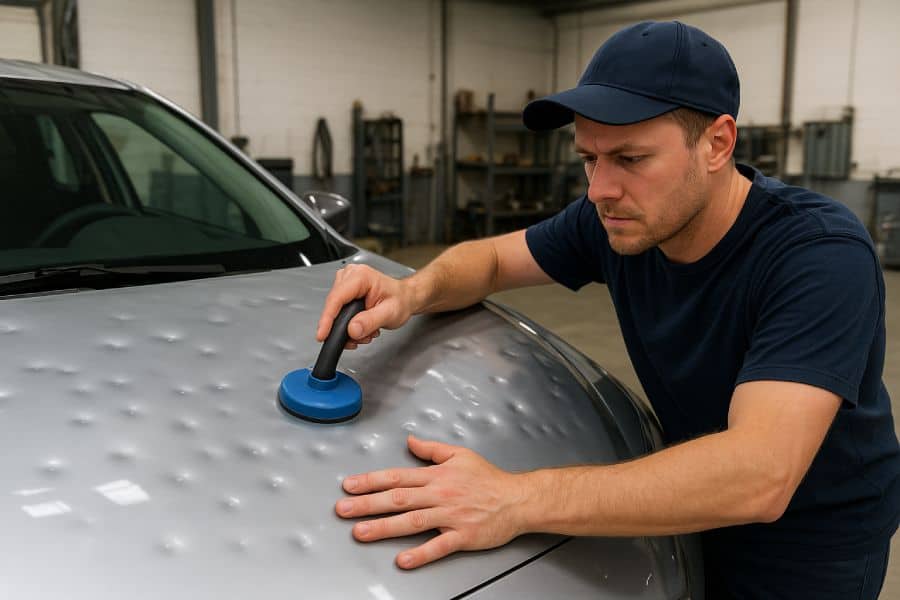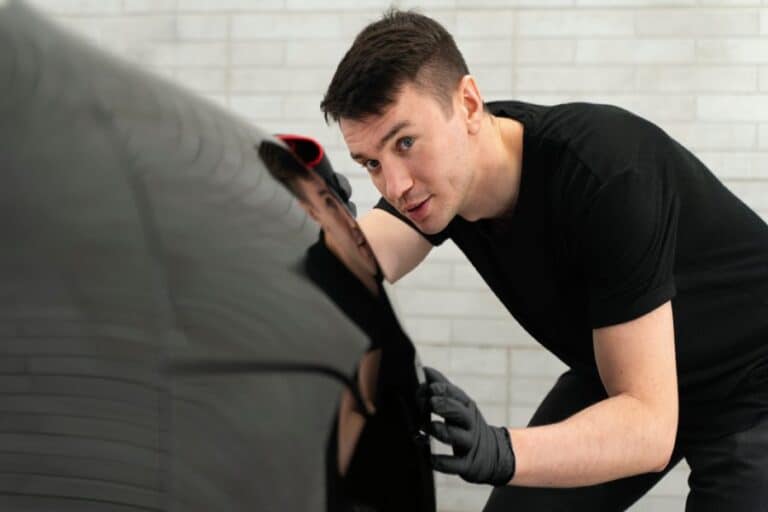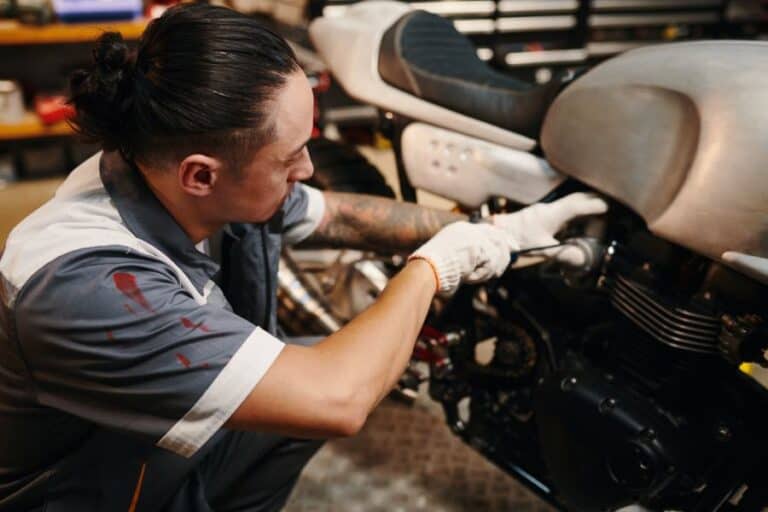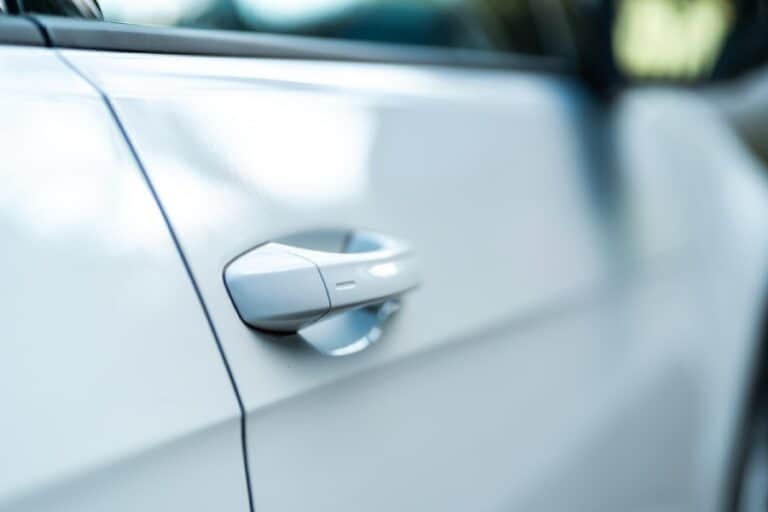Preventing Further Damage: What To Do After Your Car Gets Hit By Hail
Hailstorms can strike suddenly, causing significant damage to cars and leaving drivers uncertain about how to proceed. When hail hits a vehicle, it can lead to problems such as dents, broken windshields, and chipped paint. These issues not only affect the car’s visual appeal but can also lower its resale value and lead to costly repairs if not addressed promptly. It’s crucial to know the right actions to take immediately after your vehicle suffers hail damage in order to avoid further complications and protect your investment.
Understanding the Impact of Hail Damage on Your Car
What Occurs to Your Vehicle During a Hailstorm?
When a hailstorm strikes, your vehicle may experience varying levels of harm based on the size, velocity, and direction of the hailstones, which can be as small as pellets or as large as golf balls and beyond. Typically, hail results in dents on the hood, roof, and trunk, along with broken or cracked windshields and windows, paint chips or scratches, and potential damage to side mirrors or headlights. Even small dents can lead to paint fractures that expose the metal beneath to moisture, increasing the risk of rust over time.
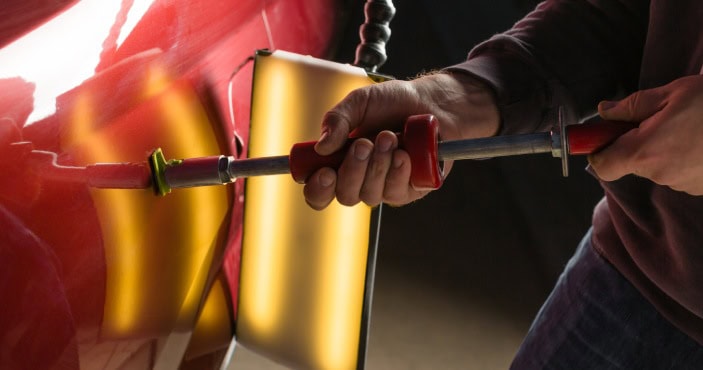
The Importance of Prompt Response
Neglecting hail damage can exacerbate the situation. For instance, chipped paint or fractured glass might allow water to enter, resulting in corrosion or electrical problems. Swiftly addressing the damage helps prevent these secondary issues and could also enhance your chances of qualifying for insurance claims.
Assess the Damage Safely
Conduct a Comprehensive Vehicle Examination
After the hailstorm has ended, make sure to assess your car in a secure and dry environment. Begin by circling the vehicle value to identify any noticeable dents or shattered glass. Utilize a flashlight to inspect areas that are difficult to see, such as beneath the bumper or along the sides.
Key considerations:
- Refrain from driving if windows are broken or your visibility is compromised.
- Capture images from various angles to record all damage.
- Be aware of any strange noises or performance issues while operating the vehicle.
Look for Concealed Damage
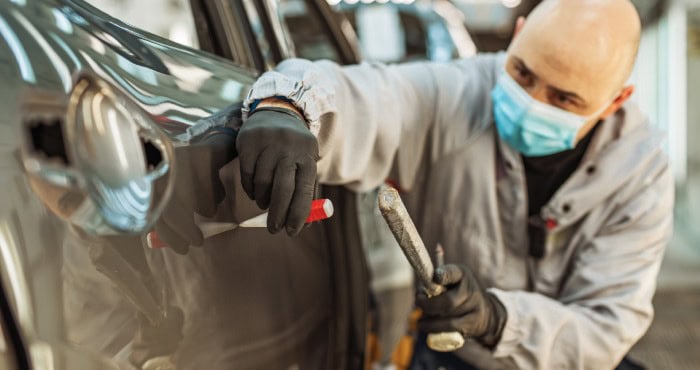
Occasionally, hail damage may not be immediately apparent. Be vigilant for:
- Cracks or gaps in door seals and rubber trims.
- Chips in the windshield that could later develop into larger cracks.
- Signs of water leaks inside the vehicle that might become evident after rainfall.
Prevent Further Damage
To avoid additional harm to your vehicle, it’s crucial to quickly repair any shattered windows or windshield fractures. Left unaddressed, these issues can allow moisture to infiltrate the interior, leading to damage and accelerating rust development. To mitigate this risk, cover any broken glass with plastic sheeting or a tarp, ensuring it is securely taped down. Whenever feasible, park your car in a garage or beneath a protective cover to safeguard it from harsh weather conditions.
If sheltered parking isn’t an option, consider using weather-resistant car covers that are specifically made to defend against rain and debris. It’s essential not to drive your vehicle until repairs are completed, as broken windows and cracks can pose safety hazards and exacerbate the existing damage.
Contact Your Insurance Company
Take the time to review your auto insurance policy, paying close attention to the comprehensive coverage section. This will help you confirm essential details like deductibles, claim limits, and the documentation required for hail damage. Understanding these elements will lead to a more efficient claims process.
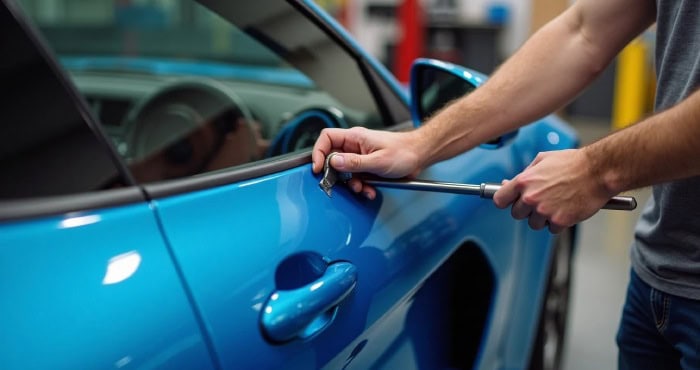
Make sure to notify your insurance company about your claim as soon as possible. Provide them with clear photographs of the damage, a detailed description of the hailstorm and its effects, and any repair estimates or evaluations you may have. Contacting your insurer promptly can speed up both the claim approval and repair timelines.
Get Professional Damage Estimates
Opt for a Trustworthy Auto Body Repair Facility
Find an established repair center that specializes in restoring vehicles affected by hail damage. Keep the following in mind:
- Feedback and ratings from customers
- Proficiency in handling insurance claims
- Provision of paintless dent repair (PDR) services
Paintless Dent Repair: An Economical Solution
Paintless dent repair (PDR) is an effective technique for addressing hail-induced dents without the need for repainting. This method works by gently pushing out the dents from behind, maintaining the original paint surface, which typically results in quicker and more affordable repairs.
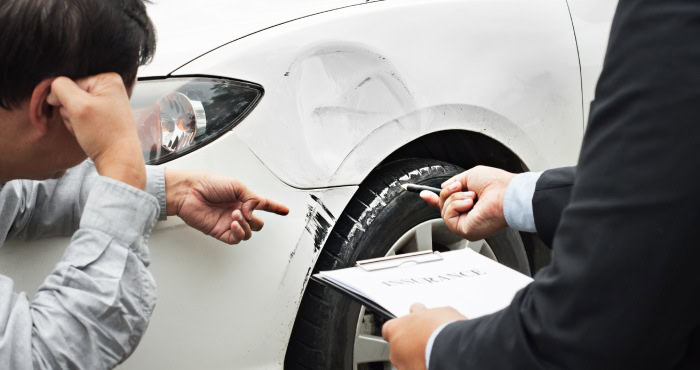
Schedule Repairs Promptly
It’s important to address hail damage repairs without delay; procrastination can lead to rust and additional damage. Timely repairs not only help maintain your vehicle’s look and worth but also avert secondary issues such as rust and mold, potentially lowering the total repair costs.
The repair process will depend on how severe the damage is. Small dents can often be fixed using paintless dent repair, whereas significant damage may necessitate conventional bodywork and a fresh coat of paint. Furthermore, if there are cracked windows or windshields, they might require replacement, and if water damage has happened, interior cleaning might also be essential.
Take Preventative Measures for the Future
Safeguard Your Vehicle Against Hail Damage
Although you can’t influence the weather, there are steps you can take to reduce the risk of hail damage:
- Seek out covered parking or sheltered spots during storms.
- If you must park outside, consider using a hail-resistant car cover.
- Whenever feasible, set up a garage or carport for added protection.
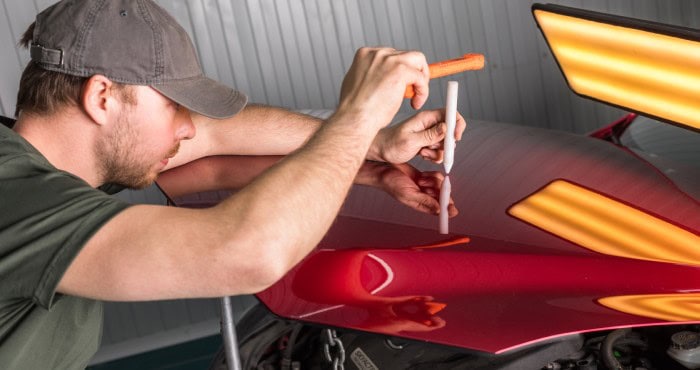
Keep an Eye on Weather Notifications
Use weather apps or alerts to keep track of upcoming conditions. This helps you stay informed about potential hailstorms. By doing so, you can move your vehicle to a safe location before the hail arrives.Hail damage repair is crucial after a storm causes sudden and costly harm to your vehicle, and taking immediate steps can prevent further deterioration and reduce repair costs.
By thoroughly assessing the damage, protecting your car from the elements, promptly notifying your insurance company, and scheduling repairs with qualified professionals, you ensure your vehicle’s safety and value are maintained. Staying proactive with weather alerts and investing in protective measures helps minimize the impact of future hail damage and keeps your car in optimal condition.

